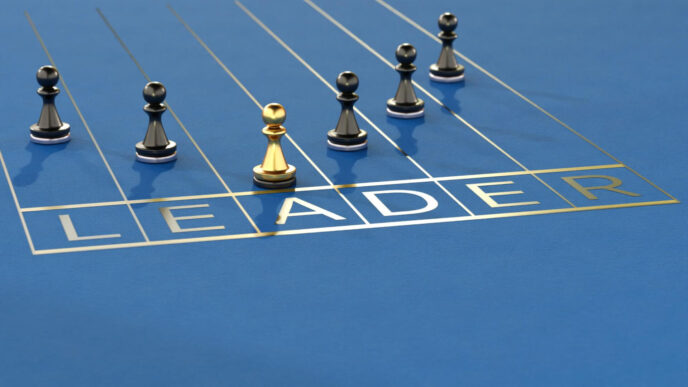Unlock Your Brain’s Potential with Smart Study Habits
Why Traditional Studying Doesn’t Work Anymore
You sit down, open your textbook, highlight a few lines, reread them… and somehow, nothing sticks. If that sounds familiar, you’re not alone. Most people still rely on outdated study methods that barely scratch the surface of how our brains actually retain and recall information. The result? Hours of effort with little to show for it.
In a world overloaded with information and endless distractions, studying harder is no longer enough. You need to study smarter—and that’s where modern, science-backed study tips come in.
The New Science of Learning Faster and Smarter
Thanks to research in neuroscience and cognitive psychology, we now understand far more about how the brain learns best. It’s not about cramming or burning the midnight oil. Instead, it’s about leveraging strategic study habits, memory techniques, and focus boosters that align with how the brain naturally processes and stores information.
The good news? These techniques aren’t complicated—they’re simple hacks that anyone can learn and apply. And once you do, you’ll start to notice results fast:
- You’ll retain information longer without the frustration of forgetting it days later.
- You’ll study with sharper focus, even if your attention span feels fried.
- And you’ll cut study time in half while getting better outcomes.
What This Guide Will Help You Do
In this article, you’ll discover some of the most powerful, research-proven strategies to:
✔️ Learn faster without sacrificing depth
✔️ Improve memory and retention with ease
✔️ Use smart study hacks built for modern learners
✔️ Stay focused and beat procrastination
✔️ Make learning more enjoyable and less overwhelming
Whether you’re a student, a professional, or a lifelong learner, this guide is your toolkit for learning better, faster, and smarter—starting today.
Let’s break free from ineffective study habits and tap into a system that actually works. Ready to level up your learning? Let’s begin.
The Science Behind Fast Learning
How the Brain Absorbs Information
The brain is a complex network of neurons that communicate through electrical and chemical signals. When we learn something new, our brain forms new neural connections, strengthening them through repetition and reinforcement. The more frequently we use these pathways, the easier it becomes to recall information.
One of the most important aspects of learning is synaptic plasticity, which refers to the brain’s ability to strengthen or weaken synapses based on experience. This means that the more you engage with information, the stronger the neural connections become, making recall faster and more automatic.
The Role of Neuroplasticity
Neuroplasticity is the brain’s ability to reorganize itself by forming new neural connections throughout life. This means that anyone can improve their ability to learn, regardless of age. Factors that enhance neuroplasticity include:
- Engaging in new and challenging activities – Learning a new language, playing an instrument, or solving puzzles stimulates brain growth.
- Repetition and spaced learning – Reviewing information at spaced intervals strengthens neural connections.
- Physical exercise – Movement increases blood flow to the brain, promoting the formation of new connections.
- Quality sleep – Sleep consolidates new memories and enhances problem-solving skills.
Memory Retention and Recall Techniques
Memory works in three stages: encoding, storage, and retrieval.
- Encoding: The process of taking in new information. Active engagement (like taking notes or summarizing) improves encoding.
- Storage: How the brain organizes and retains information. Organizing knowledge into categories makes retrieval easier.
- Retrieval: The process of recalling stored information. Practicing retrieval through self-quizzing strengthens memory.
To improve retention, try:
✔️ Chunking – Breaking information into smaller, meaningful groups (e.g., remembering phone numbers as sequences instead of individual digits).
✔️ Mnemonics – Using acronyms, rhymes, or visual imagery to encode information.
✔️ The Method of Loci (Memory Palace) – Associating facts with specific locations in an imaginary space.
✔️ Interleaving Practice – Mixing different topics instead of focusing on one at a time.
How Emotions Affect Learning
Emotions play a crucial role in how well we learn. Studies show that positive emotions (curiosity, excitement, and motivation) enhance learning, while negative emotions (stress, anxiety, and fear) can impair memory formation. To create an optimal emotional state for learning:
- Stay motivated by setting small, achievable goals.
- Make learning enjoyable by using interactive tools, gamification, or real-world applications.
- Reduce stress through mindfulness, deep breathing, or physical activity before studying.
By understanding how the brain learns and applying science-backed strategies, you can optimize your study habits for maximum efficiency.
Optimizing Your Learning Environment
The Best Places to Learn
Your learning environment plays a crucial role in how well you absorb and retain information. Studies show that where you study can impact focus, memory, and overall cognitive performance. The best places to learn typically have:
✔️ Minimal distractions – A quiet space away from noise and interruptions.
✔️ Good lighting – Natural light is ideal, but bright LED lights can also enhance focus.
✔️ Comfortable seating – Proper posture prevents fatigue and improves concentration.
✔️ Proper ventilation – Fresh air boosts brain function and alertness.
While libraries, study rooms, and dedicated home offices are ideal, some people focus better in coffee shops or coworking spaces due to ambient noise. Experiment with different locations to see what works best for you.
Minimizing Distractions for Maximum Focus
Distractions are one of the biggest barriers to effective learning. To minimize interruptions:
- Turn off notifications – Silence your phone and block distracting apps while studying.
- Use website blockers – Apps like Freedom or Cold Turkey can prevent access to social media.
- Set clear boundaries – Let family or roommates know when you need uninterrupted time.
- Use the Pomodoro technique – Study in focused intervals with short breaks.
A study by the University of California found that it takes an average of 23 minutes and 15 seconds to refocus after a distraction, highlighting the importance of an optimized study environment.
Ergonomics and Its Impact on Cognitive Function
Your physical comfort directly affects your ability to concentrate. Poor ergonomics can lead to discomfort, fatigue, and decreased productivity. Here’s how to set up an ergonomic study space:
✔️ Use a supportive chair – Your feet should rest flat on the floor, with knees at a 90-degree angle.
✔️ Position your screen at eye level – Reduces neck strain and improves posture.
✔️ Keep materials within reach – Avoid constant reaching for books, notes, or devices.
✔️ Take regular breaks – Stretch and walk around to prevent stiffness.
Using Music and Sounds to Improve Concentration
Music can be a powerful tool for focus, but the type of music matters:
- Instrumental or classical music – Reduces distractions while promoting deep concentration.
- Nature sounds – Ocean waves, rain, or white noise can create a calming atmosphere.
- Lo-fi beats – A popular choice for studying as it maintains a steady rhythm without lyrics.
A study published in Psychological Science found that moderate background noise can boost creativity and learning efficiency. However, loud or lyric-heavy music can be distracting, so choose wisely.
By optimizing your learning environment, you set yourself up for greater focus, efficiency, and retention.
Effective Note-Taking Strategies
The Cornell Method
One of the most effective note-taking techniques, the Cornell Method, was developed by Walter Pauk at Cornell University. It divides a page into three sections:
- Cue Column (Left) – Write keywords, questions, or main ideas.
- Notes Section (Right) – Summarize lecture or reading content.
- Summary (Bottom) – After reviewing, condense key points into a few sentences.
This structure promotes active engagement, making it easier to recall information during revision. Studies suggest that students using the Cornell Method retain 34% more information compared to those using traditional note-taking.
Mind Mapping for Complex Topics
Mind maps are visual representations of information that help connect ideas. This technique is useful for subjects with interconnected concepts, like science or history. To create an effective mind map:
✔️ Start with a central topic in the middle of the page.
✔️ Use branches to connect main ideas related to the topic.
✔️ Add sub-branches for details using keywords or short phrases.
✔️ Incorporate colors and images to enhance memory recall.
A study from the Journal of Educational Psychology found that mind mapping increases comprehension by 10–15% compared to linear note-taking.
The Power of Active Summarization
Instead of passively copying notes, actively summarize information in your own words. This process forces you to process and understand concepts deeply. Effective summarization methods include:
- One-Sentence Summaries – Capture the main idea in a single sentence.
- The “Explain Like I’m 5” Approach – Simplify complex concepts as if explaining to a child.
- Bullet-Point Summaries – Break down key points concisely.
Research shows that students who rewrite notes from memory after learning retain significantly more information than those who merely reread their notes.
Digital vs. Handwritten Notes
Which method is better—typing or handwriting? The answer depends on your learning style:
| Handwritten Notes | Digital Notes |
|---|---|
| Enhances memory retention | Faster and more organized |
| Requires more time but improves recall | Easily searchable and editable |
| Encourages better focus | Convenient for storing large amounts of information |
Studies from Princeton University found that students who write notes by hand understand concepts better and perform better on conceptual questions compared to those who type. However, digital tools like Notion, Evernote, or OneNote offer efficiency and accessibility.
To maximize effectiveness, combine both methods—write by hand for comprehension, and use digital notes for organization.
By applying these note-taking strategies, you’ll process information faster, improve comprehension, and enhance long-term retention.

Speed Reading and Comprehension Techniques
How to Increase Reading Speed Without Losing Retention
Many believe that speed reading sacrifices comprehension, but with the right techniques, you can read faster while maintaining or even improving understanding. The average person reads at 200-250 words per minute (wpm), but with training, you can reach 500+ wpm without losing comprehension.
To read faster effectively:
✔️ Avoid subvocalization – Stop silently pronouncing words in your head.
✔️ Use a pacer – Guide your eyes with a finger or a pen to move faster.
✔️ Expand peripheral vision – Train yourself to read groups of words instead of one at a time.
✔️ Pre-read for context – Skim headlines, subheadings, and bolded text before deep reading.
The Chunking Method
Instead of reading word by word, train your brain to process words in chunks. For example:
❌ Word-by-word reading: The / human / brain / can / process / words / faster / than / we / think.
✅ Chunking reading: The human brain / can process words / faster than we think.
This method reduces fixation time per word and helps double reading speed with practice.
Using Peripheral Vision for Faster Absorption
Instead of moving your eyes across each word, train yourself to use peripheral vision to absorb multiple words at once. A common technique:
- Focus your eyes slightly ahead of the line instead of moving word by word.
- Practice with a narrow reading window (like covering part of the text) to force faster eye movements.
The Power of Pre-Reading and Skimming
Before deep reading, do a quick scan of the material. This primes your brain for better comprehension and recall. Effective strategies include:
✔️ Read the introduction and conclusion first.
✔️ Look at headings, subheadings, and bold text.
✔️ Identify key themes before reading in detail.
According to research from the University of California, pre-reading improves comprehension by up to 22% because your brain actively prepares to absorb the material.
Balancing Speed and Comprehension
Fast reading is only valuable if you retain the information. To ensure comprehension:
- Pause after sections to summarize what you’ve read.
- Use active recall – try to explain the content without looking back.
- Combine speed reading with note-taking techniques for deeper learning.
By mastering these techniques, you’ll consume more information in less time while ensuring deep understanding and recall.
Memory Enhancement Hacks
Mnemonics and Visualization
Mnemonics are memory aids that help you encode and retrieve information faster. By associating facts with images, acronyms, or rhymes, you make them more memorable.
Some effective mnemonic techniques include:
✔️ Acronyms – Creating words from the first letters of key concepts (e.g., HOMES for the Great Lakes: Huron, Ontario, Michigan, Erie, Superior).
✔️ Rhymes – Using rhythm and sound to remember facts (e.g., “In 1492, Columbus sailed the ocean blue”).
✔️ Chunking – Breaking large information into smaller, manageable groups (e.g., remembering a phone number as 555-321-678 instead of 555321678).
Visualization also enhances memory. When learning new information, try creating mental images. For example, if you need to remember the word “elephant,” imagine a huge elephant stomping through your study notes. Studies show that people remember visuals 65% better than text alone.
The Spaced Repetition System (SRS)
Spaced repetition is one of the most powerful learning techniques. Instead of cramming, you review material at strategic intervals, which strengthens long-term memory retention.
How Spaced Repetition Works:
- Review new information immediately after learning.
- Revisit it after one day, then one week, then one month.
- Increase intervals as you remember the material more easily.
Popular tools like Anki, Quizlet, and SuperMemo automate spaced repetition and help learners remember information up to 80% more effectively compared to traditional studying.
The Memory Palace Technique
Also known as the Method of Loci, this technique leverages spatial memory to help you recall complex information. It was used by ancient Greek scholars to memorize long speeches.
How to use a Memory Palace:
✔️ Choose a familiar place (your home, a park, or a route you often walk).
✔️ Associate information with locations along that route.
✔️ Visualize yourself walking through it while recalling the stored facts.
For example, if you need to remember the planets in order, imagine Mercury on your doorstep, Venus at your kitchen table, Earth in your living room, and so on. This method is particularly effective for memorizing long lists, speeches, or historical facts.
Association and Storytelling for Retention
Humans are naturally wired to remember stories better than isolated facts. Instead of memorizing raw data, turn it into a narrative.
For example, if you need to recall the three components of memory (encoding, storage, retrieval), create a short story:
📖 A librarian (encoding) writes a book and puts it on a shelf (storage). Later, a reader picks it up to read (retrieval).
This method makes even complex topics easier to understand and recall.
By using these scientifically proven memory techniques, you can significantly improve your ability to retain and recall information faster than ever before.

Learning Through Teaching
The Feynman Technique: Simplify to Master
The Feynman Technique, developed by physicist Richard Feynman, is one of the most powerful learning hacks. It follows a simple four-step process:
- Choose a concept you want to learn.
- Explain it in the simplest possible terms as if teaching a child.
- Identify gaps in your understanding where you struggle to simplify.
- Refine and repeat until you can explain it effortlessly.
This technique works because it forces your brain to process and organize information, rather than passively absorbing it. If you can’t explain a concept in simple words, you don’t fully understand it yet.
Why Teaching Others Reinforces Knowledge
Teaching engages multiple cognitive processes, making learning more efficient. Studies show that when you teach a concept:
✔️ You reinforce neural connections, strengthening memory.
✔️ You recognize gaps in your knowledge, improving understanding.
✔️ You use active recall, a scientifically proven memory booster.
According to research from Washington University, students who taught newly learned material retained up to 50% more than those who simply studied it.
How Peer Discussions Improve Learning Speed
Explaining concepts to friends, colleagues, or study groups enhances understanding. Engaging in discussions forces you to:
- Think critically about the material.
- Challenge assumptions and see different perspectives.
- Clarify doubts instantly, making learning more interactive.
A study from the Journal of Learning Sciences found that students who engaged in peer teaching retained 20–30% more information compared to those who studied alone.
Group Study vs. Solo Study: Which is Better?
| Solo Study | Group Study |
|---|---|
| Full control over pace and focus | Learn from different perspectives |
| Best for deep concentration | Clarifies difficult concepts faster |
| Requires self-discipline | Encourages accountability |
💡 Best Approach: Combine both! Study solo to build a foundation, then reinforce learning through discussions and teaching.
By teaching others, engaging in discussions, and simplifying concepts, you accelerate learning and develop a deeper understanding of any subject.
References and Inspirational Resources
- Dweck, Carol S. Mindset: The New Psychology of Success. Ballantine Books.
- Newport, Cal. Deep Work: Rules for Focused Success in a Distracted World. Grand Central Publishing.
- Brown, Peter C., Roediger, Henry L., & McDaniel, Mark A. Make It Stick: The Science of Successful Learning. Belknap Press.
- Feynman, Richard P. The Feynman Lectures on Physics. Addison-Wesley.
- Dunlosky, John et al. Improving Students’ Learning With Effective Learning Techniques: Promising Directions From Cognitive and Educational Psychology. Psychological Science in the Public Interest.
- The Learning Scientists – Evidence-based strategies for effective learning.
- Association for Psychological Science – Articles on cognitive performance, memory, and learning habits.















